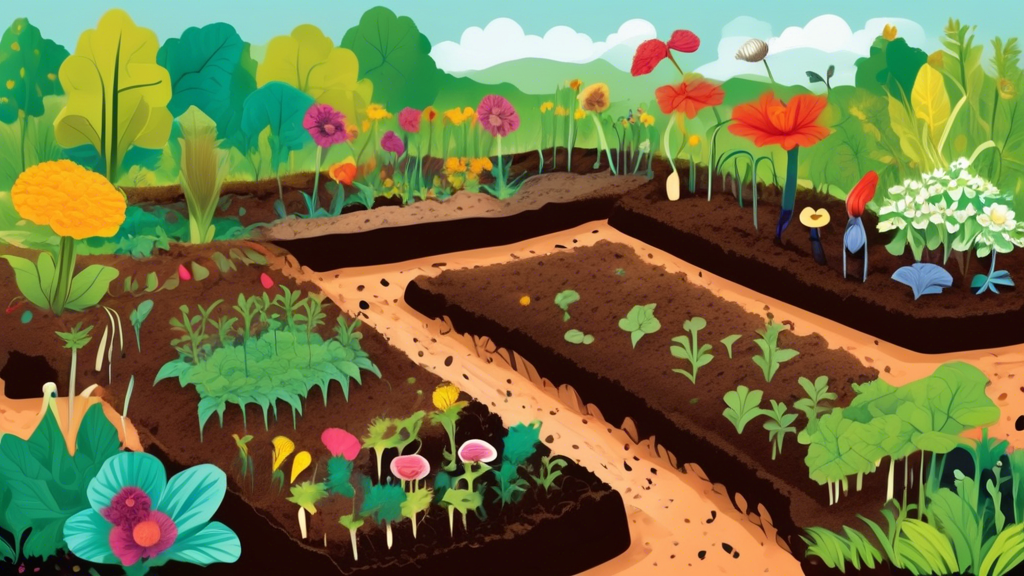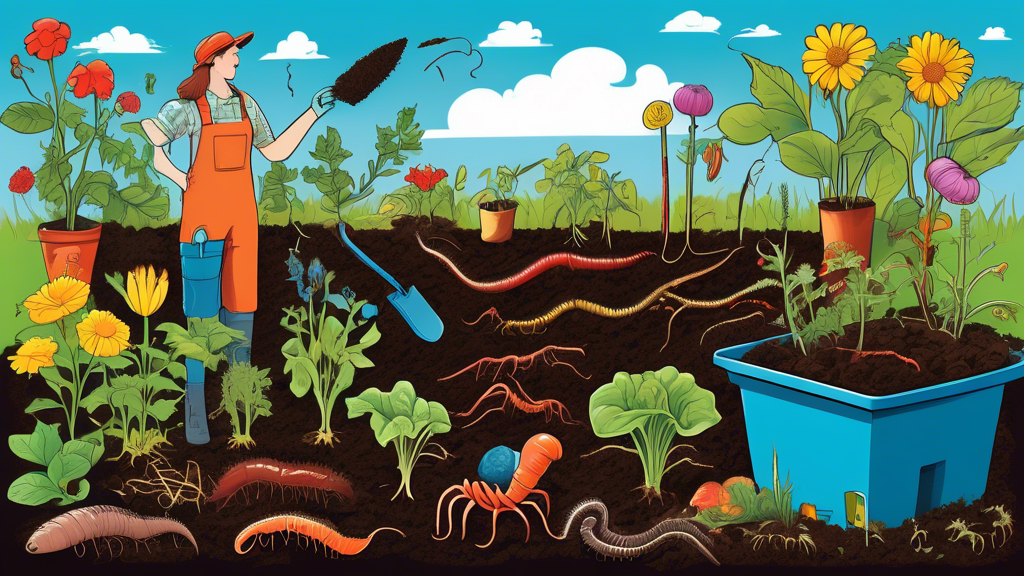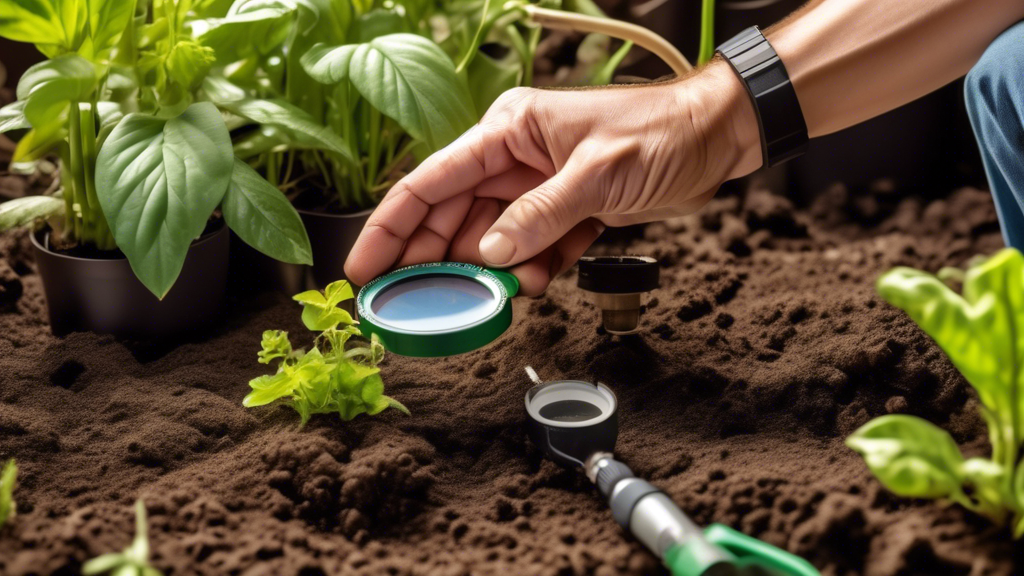
What Are Permaculture Principles? The Foundation of a Regenerative System
Beyond Organic Gardening: The Deeper Meaning of Permaculture
Permaculture is a holistic design philosophy that goes far beyond a set of gardening techniques. Coined from “permanent agriculture” and “permanent culture,” it’s a framework for creating sustainable and self-sufficient human habitats by observing and emulating the resilient, closed-loop systems found in nature.
The Core Ethics: The Heart of Every Design
Every permaculture design is guided by three core ethics that form its moral foundation:
- Earth Care: Respecting and regenerating living and non-living natural systems.
- People Care: Supporting and helping each other to access the resources necessary for a good quality of life.
- Fair Share (or Future Care): Setting limits to consumption and redistributing surplus to care for the Earth and its people.
The 12 Design Principles: A Practical Roadmap
David Holmgren’s 12 principles provide a practical, step-by-step guide for applying the permaculture ethics. The table below outlines each principle with a simple, relatable example.
| Principle | Core Idea | Practical Example |
|---|---|---|
| 1. Observe and Interact | Spend time in nature to understand its patterns before acting. | Track the sun’s path across your garden for a full year before planting a tree. |
| 2. Catch and Store Energy | Harvest abundance when it is available. | Collect rainwater in barrels or install solar panels. |
| 3. Obtain a Yield | Ensure your work provides a useful, immediate reward. | Plant fast-growing salad greens alongside slower-growing fruit trees. |
| 4. Apply Self-Regulation & Accept Feedback | Design systems that correct themselves and learn from mistakes. | If a plant is being over-eaten by pests, don’t just spray; ask why it’s vulnerable and plant a more resilient variety. |
| 5. Use & Value Renewable Resources | Favor resources that replenish themselves. | Use wood from a coppiced tree (which regrows) instead of a slow-growing hardwood. |
| 6. Produce No Waste | See waste as a resource out of place. | Compost kitchen scraps and use “greywater” from your shower to irrigate plants. |
| 7. Design from Patterns to Details | Start with the big picture, then fill in the specifics. | Map the flow of water across your land (the pattern) before deciding where to place each vegetable bed (the detail). |
| 8. Integrate Rather Than Segregate | Create relationships where elements support each other. | Planting flowers among vegetables to attract pollinators and predatory insects that control pests. |
| 9. Use Small and Slow Solutions | Start modestly and allow systems to evolve. | Begin with a small, manageable garden bed instead of tilling up your entire yard. |
| 10. Use and Value Diversity | Diversity reduces vulnerability and increases resilience. | Planting a “polyculture” of many different crops instead of a single “monoculture.” |
| 11. Use Edges & Value the Marginal | The interface between two systems is often the most productive. | Creating a pond edge, which is a rich habitat, rather than just a lawn meeting a steep bank. |
| 12. Creatively Use & Respond to Change | See change as an opportunity, not a threat. | When a tree falls, use the new sunny patch to grow light-loving plants and the log to cultivate mushrooms. |
Common Challenges and How Permaculture Addresses Them
“I Feel Overwhelmed and Don’t Know Where to Start.”
The principle of “Small and Slow Solutions” is the perfect antidote. You don’t need to transform your entire property at once. Begin with a single, manageable project like a container garden for herbs or setting up a compost bin. This builds confidence and provides immediate, tangible results.
“My Garden is High-Maintenance and Constantly Needs Inputs.”
Conventional gardens often operate as open systems, constantly leaking resources. Permaculture solves this by creating closed-loop systems. By “Catching and Storing” water and “Producing No Waste” (through composting), you dramatically reduce the need for external water, fertilizers, and pesticides, making your garden more self-maintaining over time.
“I Want to Be Sustainable, But It Seems Expensive and Inefficient.”
While there can be upfront costs, permaculture is an investment in long-term efficiency and savings. By “Using and Valuing Renewable Resources” like sunlight and rainwater, and thoughtfully designing your space to work with natural patterns, you create a system that becomes cheaper and more productive each year, ultimately saving you money and effort.
Permaculture vs. Other Methods: A Clear Comparison
Permaculture vs. Traditional Agriculture
| Aspect | Traditional Agriculture | Permaculture |
|---|---|---|
| Focus | Maximizing yield of a single crop (monoculture). | Creating a resilient, diverse ecosystem (polyculture). |
| Inputs | High use of synthetic fertilizers, pesticides, and fossil fuels. | Minimal external inputs; relies on natural cycles and closed loops. |
| Soil Health | Often leads to degradation and erosion. | Actively builds and regenerates soil organic matter. |
Permaculture vs. Organic Gardening
| Aspect | Organic Gardening | Permaculture |
|---|---|---|
| Scope | Primarily a set of gardening practices. | A whole-systems design philosophy for life. |
| Primary Focus | What you don’t do (e.g., no synthetic chemicals). | How everything connects (the relationships between plants, animals, water, and structures). |
| Application | Typically applied to food production. | Applied to food, water, energy, shelter, and community systems. |
Unique Insight: The “Zone and Sector” Planning Model
A powerful design tool that many newcomers overlook is the Zone and Sector model. This is the secret to creating a highly efficient and site-specific design.
- Zones: This is about organizing your space based on the frequency of human use. Zone 0 is your home. Zone 1, right outside your door, is for items you use daily (herbs, a small compost bin). Zone 5 is a wild area you rarely visit. This zoning minimizes daily labor.
- Sectors: This involves mapping the external energies that move through your site, like sun, wind, water runoff, fire risk, and even noise. You then design to either harness beneficial energies (like sun for a greenhouse) or block negative ones (like a windbreak for a cold north wind).
Why it’s a game-changer: This model forces you to work with your land’s unique characteristics, creating a design that is inherently more efficient, resilient, and lower maintenance than one imposed upon the landscape.
Frequently Asked Questions About Discovering Permaculture Principles
Do I need a huge piece of land to practice permaculture?
Absolutely not. The principles of permaculture are about design thinking and can be applied to any scale, from an apartment balcony with container plants to a small urban yard or a multi-acre farm. It’s about optimizing the space you have.
Is permaculture only about growing food?
No. While it is famous for creating “food forests,” permaculture is a comprehensive design system. It can be applied to water harvesting, renewable energy, natural building (like earthships), and even designing more efficient and ethical social and economic structures.
How long does it take to see results?
It depends on the scale and element. Some yields, like salads from a garden bed, can be seen in weeks. A fully mature, self-fertilizing food forest may take 5-10 years to establish. The key is that each year the system should require less work and input from you, becoming more self-sufficient and productive.
Where is the best place to start discovering Permaculture Principles on my own?
The best and most crucial place to start is with the first principle: Observe and Interact. Before you plant a single seed, spend time on your land. Notice where the sun falls in summer and winter, where water pools, and which way the prevailing winds blow. This foundational step of observation is the most important investment you can make in a successful design.
Your Next Step: From Discovery to Action
The journey of discovering Permaculture Principles is a lifelong learning process that can transform not just your landscape, but your entire perspective. Don’t feel pressured to do everything at once. Choose one principle that resonates with you—like “Catch and Store Energy” by setting up a simple rain barrel—and take that small, tangible step today. For further learning, consider resources like Bill Mollison’s “Introduction to Permaculture” or connecting with a local permaculture guild to see these principles in action.






